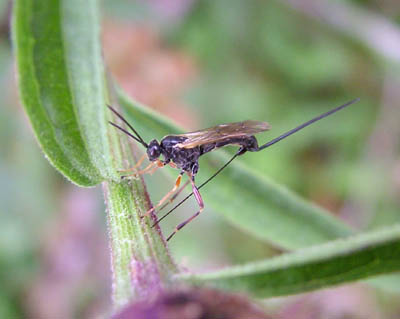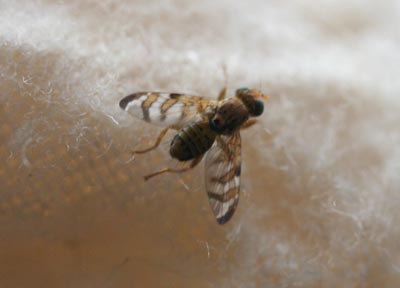Dull and wet for much of the day.


Thee were subsequently identified as Macrocentrus sp. (L) and Scambus brevicornis (R).
The major feeders on Knapweed are Tephritid flies and micromoths, so I had two targets to explore.

This January, I found dipterous larvae in Knapweed and took a couple of specimens to see if they would hatch in captivity. At this point, Tephritids seemed most likely as the hosts.
Yesterday, one of the flies hatched and it has been identified as Terellia virens, which is a Tephritid and a known Knapweed feeder. So now we have another life-cycle documented.


1) The female Tephritid lays her eggs on the Knapweed flower in summer and the larvae hatch and burrow down through the seedhead until they reach the achene (seed). They then feed on the seeds until they are fully grown, overwintering in the seedhead and hatching in summer if undisturbed.
2) The ichneumonid - a wasp - lays an egg directly into the body of the host larva in late summer. The wasp egg stays dormant until the fly larva has reached full size and has pupated. The wasp egg then hatches and the wasp larva eats the contents of the fly pupa. The wasp larva then pupates and hatches in late summer. Adult wasps can be seen searching Knapweed seedheads for Tephritid larvae from August onwards.